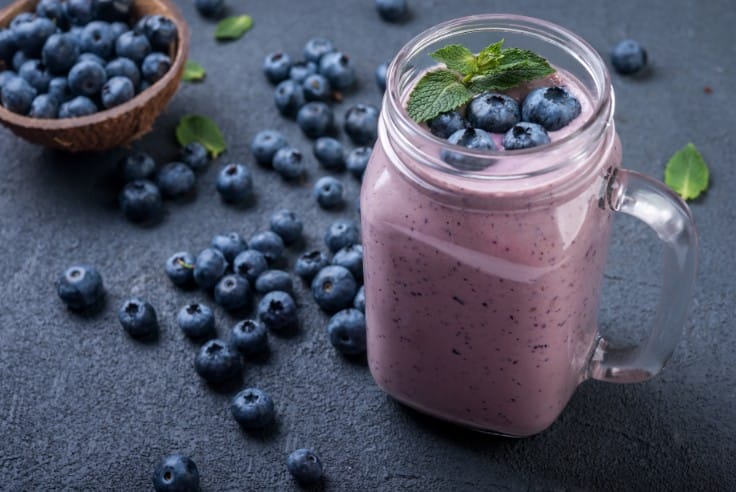The number of non-dairy milk options available in your grocer’s refrigerator case has grown exponentially in the past few years. Whether for health or ethical reasons, a lot of us are turning to these plant-based milk products, so we wanted to break down some of the options.
As always, it’s important to read labels to avoid added sugars and chemicals but on the flip side, many alternative milks are fortified with vitamins and calcium. Silk is a widely available brand that offers many of the dairy milk alternatives we’ll explore below.
Soy
Dairy milk’s oldest cousin soy milk, has about the same amount of protein as cow’s milk and is naturally rich in potassium. Soy milk is often fortified with calcium and vitamins. There’s been some controversy around soy as a source of plant-based estrogen but those concerns about soy leading to higher breast cancer risk and other reproductive issues have been mostly dispelled. Soy is a pretty common source of food allergies though, so proceed with caution if you have food sensitivities.
Pea Protein
For a non-dairy milk with great nutritional value and creaminess, we like pea protein milk. This relative newcomer to the market has as much protein as dairy milk but half the sugar. It’s also environmentally friendly. Ripple Foods, the company that introduced pea milk to the market, even features a ticker on their website tracking their environmental footprint when it comes to carbon emissions, water, and plastic use.
Almond
Almond milk is probably the most widely used dairy milk replacement. It’s lower in calories and fat than dairy milk and is a good source of vitamin E. Almond milk is low in protein and not a good option for anyone with a tree-nut allergy. Almonds also are a very water-intensive crop, so not the most environmentally-friendly option, since almonds tend to be produced in drought-prone areas.
Tree Nuts
Alternatives to almond milk include cashew, hazelnut, walnut, pistachio and macadamia. Nut milks as a whole tend to be lower in calories than dairy milk and much lower in carbs. Check out Elmhurst products for their wide variety of nut milks.
Seeds
Hemp, flax, chia, pumpkin, sunflower and sesame seeds are also gaining popularity. They’re good options for anyone with tree-nut allergies, and many varieties are a great source of heart-healthy omega-3 fatty acids.
Coconut Milk
The white pulp of the ripe seed/nut/fruit is mixed with water to produce coconut milk, which is different from the clear water that comes naturally from the green coconut. The canned milk is generally thicker and commonly used in Asian recipes while the milk beverage in cartons is more diluted. Coconut milk is a bit polarizing because while high in calories and saturated fat, it has also been shown to improve HDL “good” cholesterol and lower LDL “bad cholesterol.” We enjoy it in moderation.
Oat Milk
A rising star among plant-based milk options is oat milk. While oats are gluten-free, oat milk is considered very low gluten and not gluten-free, primarily due to possible cross contamination with other grains during production. Oat milk is among the most sustainable and ethical vegan milks, since oats are widely available and no deforestation goes into their farming. But it’s also one of the least nutritious and highest in carbs. Baristas love it because it does foam up well for use in lattes and cappuccinos.
One thing all these nut, seed, and oat milks have in common is that they’re basically the product of saturating the nuts, seeds or oats with water, blending that mixture thoroughly, then straining it to produce a milky liquid. If you’re feeling adventurous, there are lots of recipes and how-to videos online so you can get more control over what you’re drinking.
Low Carb Blueberry Vanilla Protein Smoothie
- 0.5 cup blueberries, fresh or frozen
- 1.0 scoop vanilla bone broth protein powder
- 0.25 cup almond milk
- ¼ cup coconut creamer +3/4 cup water, or 1 cup coconut milk
- 1 cup ice
- ½ avocado (optional, but it makes the smoothie creamier)
- ¼ teaspoon vanilla (optional)
Preparation Instructions
Throw all the ingredients into a Nutri Bullet or similar heavy duty blender. Reserving a few of the blueberries for garnish.
Pour into your favorite smoothie glass and garnish with the leftover blueberries.
The Pickled Beet uses plant-based milks in many recipes, so let us know your favorites in the comments. We will customize recipes for you and your family to help you achieve your nutritional goals. Contact us for a free consultation.


